Kilkis,Central Macedonia 作者: 来源: 发布时间:2021-07-13
I.Population and Area
Location within the region
Coordinates: 40°59′N 22°52′E
Country Greece
Administrative region Central Macedonia
Regional unit Kilkis
Area
• Municipality 1,599.6 km2 (617.6 sq mi)
• Municipal unit 319.8 km2 (123.5 sq mi)
Elevation 280 m (920 ft)
Population (2011)
• Municipality 51,926
• Municipality density 32/km2 (84/sq mi)
• Municipal unit 28,745
• Municipal unit density 90/km2 (230/sq mi)
Community
• Population 24,274 (2011)
Time zone UTC+2 (EET)
• Summer (DST) UTC+3 (EEST)
Postal code 611 00
Area code(s) 23410
Vehicle registration NI, ΚΙ*
Kilkis (Greek: Κιλκίς) is a city in Central Macedonia, Greece. As of 2011 there were 22,914 people living in the city proper, 28,745 people living in the municipal unit, and 51,926 in the municipality of Kilkis. It is also the capital city of the regional unit of Kilkis.
The area of Kilkis, during the 20th century, became several times a war theatre; during the Macedonian Struggle, the Balkan Wars, WWI, WWII, the Greek Resistance and the Greek civil war.
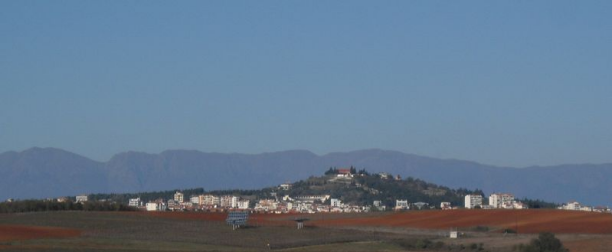
II.Natural Geography (environment and resources)
Transport
Road Transport
Kilkis is accessible from the A1 motorway to the intersection of Polykastro and National Highway 65, which passes around the town, connecting it south with Egnatia Road and Highway 25, and north with the Doiranos Customs Office and Doiranos Customs. end of Highway 25, just 10 kilometers from the Promachonos Customs (Greece - Bulgaria border).
The Kilkis is served by KTEL Bus, which performs daily trips to/from Athens, Thessaloniki and other cities within Greece.
Rail Transport
Kilkis has a train station on the Thessaloniki-Alexandroupoli line, with daily services to Thessaloniki and Alexandroupoli.
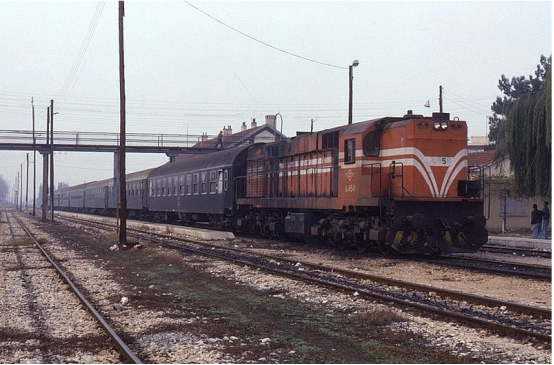
The Thessaloniki–Alexandroupoli railway is an about 440 km long railway in northern Greece connecting the Central Macedonian city of Thessaloniki with Alexandroupoli in Eastern Macedonia and Thrace, via Serres. There is a connection towards Sofia at the Strymonas station. This railway was built in 1896 by The Compagnie du Chemin de Fer Ottoman Jonction Salonique-Constantinople (JSC).
As of 2019, there is regular passenger service twice-daily to Alexandroupoli with connecting services to Dikaia, as well as international services to Sofia, to Belgrade via Skopje. The international service to Istanbul ("Friendship Express") remains suspended.
Air Transport
Kilkis currently has not an airport, the nearest is the Thessaloniki Airport, 66 km away.
III.Economy
Kilkis - Euro per inhabitant
12,000.00
in 2011
Kilkis euro per inhabitant was at level of 12,000 in 2011, down from 13,300 previous year, this is a change of 9.77%.
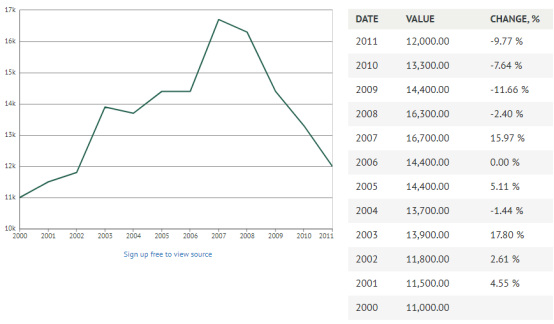
Kilkis - Purchasing Power Standard per inhabitant
13,000.00
in 2011
Though Kilkis purchasing power standard per inhabitant fluctuated substantially in recent years, it tended to decrease through 2002 - 2011 period ending at 13,000 in 2011.
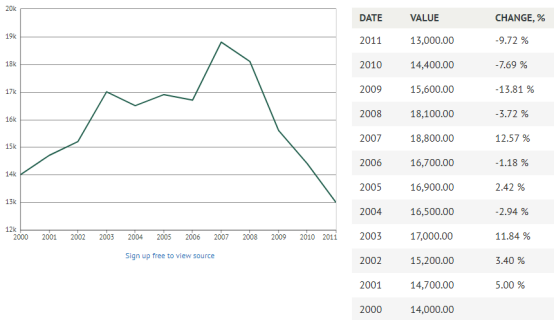
Kilkis - Millions of PPS (Purchasing Power Standard)
1,091.00
in 2011
Kilkis millions of PPS (purchasing power standard) was at level of 1,091 in 2011, down from 1,196 previous year, this is a change of 8.78%.
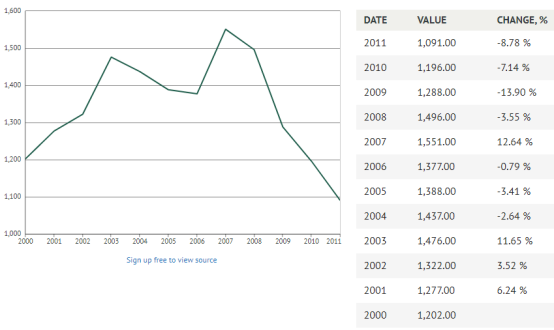
Reference: https://knoema.com/search?query=Kilkis%2C%20%20economy
IV.Industrial Characterisitics
Kilkis is an industrialized town. ALUMIL, the largest non-ferrous metal industry in Greece, is based also in Kilkis.
Alumil Aluminium Industry S.A.
The Greek aluminum industry is the largest non-ferrous metal industry in Greece, consisting of more than 6,000 small and medium-sized enterprises.
Alumil S.A. is considered one of the largest industries in extrusion of aluminum, followed by Exalco S.A., Europa S.A., Elvial S.A., Etem S.A., and Aluminco S.A. The company is specialized in the research, development and production of aluminium architectural systems. The company is headquartered in the Industrial Area of Stavrochori Kilkis, Greece and has more than 2,000 employees. Alumil S.A. operates worldwide[4] with over 30 subsidiaries.
It is listed on Athens Exchange Market.
History
In 1988, the Milonas family created an industrial company for the design, production and commercialization of aluminium profiles, in the Industrial Area of Kilkis in Northern Greece. During the 90's the company presented its first systems which were produced in Italy. In the following years, it started its own vertically integrated production line, and in 1993 it founded its commercial subsidiary Alusys in Athens, as well as a Research and Development department at its facilities in Kilkis in order to design new products. Subsequently, the company expanded its operations abroad, establishing subsidiaries in Romania in 1997, Hungary, Albania and Bulgaria in 1998, Poland and Ukraine in 1999. The following years additional subsidiaries were founded, in Germany, North Macedonia and Cyprus during 2000, as well as in Serbia and Italy during 2001. Moreover, in 2001, the subsidiary Metron S.A. specialized in elevators was created through acquisition of a company which was specialized in the production of automatic doors.
In order to strengthen the Group's domestic market share, two exhibition venues in Athens and Thessaloniki have been set up and exclusive product representation with Phifer Inc., ASA and GU has been agreed. In 2004, it acquired Alpro, a Bosnian aluminum industry. In addition, the Group received significant distinctions such as Europe's GrowthPlus Top 500 award and the "Export Activity Award" of Athens Chamber of Commerce and Industry. In 2007, a subsidiary was established in the United Arab Emirates so as to enhance the company's presence at the Arabian peninsula.
In 2008 a subsidiary in the United States of America was established. During the same period, due to Greek financial crisis the Group set priority on international markets. In 2009, a Greek subsidiary, Alumil Solar was founded, a company which specialized in the design, production and commercialization of photovoltaic mounting systems. In 2010, it founded a subsidiary based in Russia. In 2014, a certification labaratory-testing centre was set up in collaboration with CFT and the ift Rosenheim Institute. Last but not least, in 2015 Alumil announced the establishment of three more subsidiaries in Australia, India and Egypt.
Social and environmental action
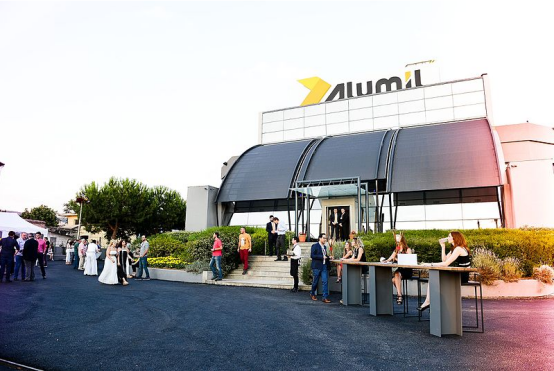
Offices in Thessaloniki
In accordance with Corporate Social Responsibility, from 2010 Alumil started implementing the environmental plan ‘’Green Alumil’’. More important was the distinction of the Group’s Innovation and Contribution in Environmental Awareness, which awarded on the Eco-Business Innovation Competition during the 4th Business Forum of the 73rd Thessaloniki International Fair. Alumil is also a member of the Hellenic Network for Corporate Social Responsibility and a founding member of the United Nations Global Compact Network.
Subsidiaries
In 2000 Alumil started its activity in Renewable Energy Resources by producing and placing photovoltaic mounting systems. Subsequently, Alumil Solar was founded nine years later (2009), and developed into a high importance and innovative business unit of the group.
Awards and distinctions
Alumil has received several awards and distinctions. The most important was the registration as an associate member of the European Union of Aluminium in 2008.
2016
Alumil was recognized as one of the most powerful and valuable brands in the category of construction materials by Superbrands Greece
2015
First Prize "Made in Greece 2015" in the category "Industrial Excellence" and First Prize in "Hellenic Value 2015" in the category "Technological Excellence"
2011
Best Helexpo Award
2010
Award from ICAP Group as True Leader
2009
Award from the “Trade & Investment Leaders Awards by Helexpo” during the 74th Thessaloniki International Exhibition in September 2009 and from the 5th Business Forum regarding with the: "Foreign Direct Investment Seize the Opportunities of the Era"
2008
Distinction as Associate Member of the European Union Aluminum
2008
Award for Photovoltaic Window Systems during the Eco-Entrepreneurship and Innovation Competition
2007
Sales Excellence Awards from the Hellenic Institute of Sales
2004
Distinction from Great Place to Work -Europe
1996/1998/2001/2002/2003/2004/2005/2007
Awards from International Growth Plus
1999/2001/2003/2004
Awards from the Athens Chamber of Commerce and Industry (ACCI)
Reference: https://en.wikipedia.org/wiki/Alumil_Aluminium_Industry_S.A.
V.Attractions
1, Archaeological Museum of Kilkis
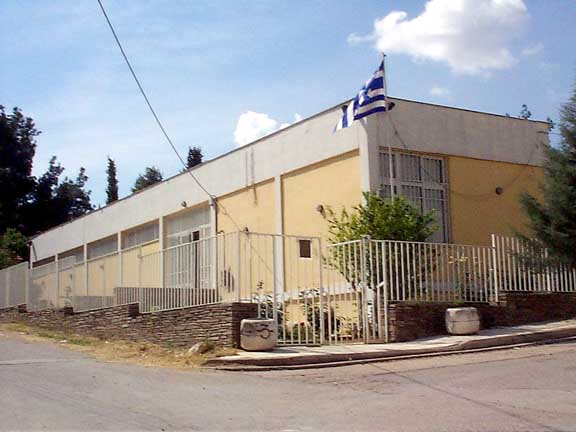
Outside view
The Kilkis Archaeological Museum is located in the city of Kilkis in Central Macedonia, Greece. It opened in 1972, its purpose being to collect finds handed in by private individuals and unearthed during excavations in the Kilkis area. The exhibits are arranged in the rooms in chronological order, they date from the Neolithic to the Roman period, and they come from excavations in the settlement of Kolchida, the cemetery at Palaio Gynaikokastro, the archaeological site at Filyria, and other parts of the Kilkis Prefecture.
In the entrance hall are the prehistoric finds from the excavations at Tsaousitsa and Axiochori, and occasional finds (stone statuettes and amulets) from Pedino, Gallikos, and Axioupoli. The first hall has Iron Age finds, the most important of which are the funerary urns, the bronze jewellery, and the iron weapons from the cemetery at Palaio Gynaikokastro. In the second hall are sculptures, inscriptions, and grave stelai of the Classical, Hellenistic, and Roman periods. The most important exhibits are the Kouros from Evropos, which represents a young man and dates to the 6th century BC, and the four statues from the heroon at Palatiano (2nd century AD). The room also contains clay figurines, pots, and some outstanding jewelry.
2, Cave St. Georgiou Kilkis
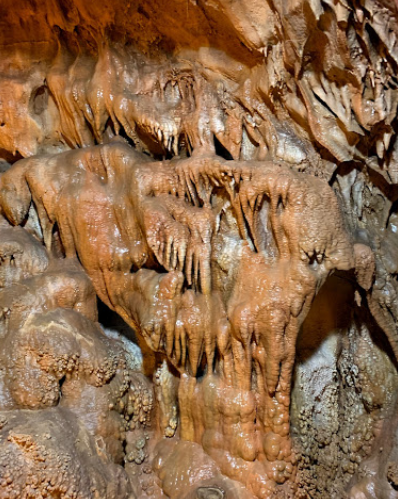
Address: Kilkis 611 00, Greece
Phone: +30 2341 020054
3, Folklore Museum of Kilkis
The Folklore Museum was founded in 1997 and housed the collection of Chris Ketsetzis in 1998. It is a nonprofit institution that acquires its material through donations and uses it to preserve and promote the history and culture of the region.
Address: Tampaki, Kilkis 611 00, Greece
VI.History
Ancient age

The archaeological site of Evropos
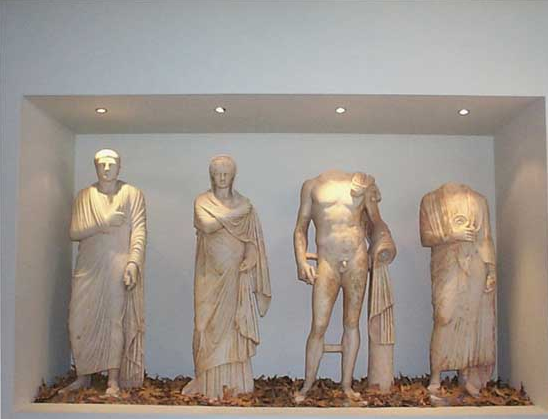
Exhibits at the Archaeological Museum of Kilkis
Findings dating back to as early as the Bronze and Iron Age have been excavated in the vicinity of Kilkis, including ancient tombs of the 2nd millennium BC. In classical antiquity, the wider region of Kilkis was ruled by the kingdom of Macedon. At the time, Kilkis was in the center of a region called Krestonia. When Phillip II of Macedon visited Krestonia, the locals offered him olives from Krestonia valley, something that he had never eaten before. At that time, many towns flourished in the region, such as Idomeni, Atalanti (Axioupoli nowadays), Gortynia (Gorgopi nowadays), Planitsa (Fyska nowadays), Terpillos, Klitae (Xylokeratia nowadays), Vragylos (Metalliko nowadays), Ioron (Palatiano nowadays), Chaetae (Tsaousitsa nowadays), Carabia (Limnotopos nowadays), Bairos (Kastro nowadays), Morrylos (Ano Apostoli nowadays), Doveros (Doirani nowadays), Evropos and Kallindria.
Roman and Byzantine era
In 148 BC, the Romans took over the area. In late antiquity the area of Kilkis saw invasions of different tribes, such as the Goths, the Huns, the Avars and the Slavs, some of whom gradually settled in the Balkan Peninsula.
In the Middle Ages, Kilkis changed hands several times between the Byzantine and Bulgarian Empires. In the 10th century, it was sacked by the Bulgarians, and some of the inhabitants moved to Calabria, in southern Italy, where they founded the village of Gallicianò.[citation needed] During the reign of the Palaeologus dynasty, the region saw the completion of a number of important infrastructure works.
Ottoman rule
The period of prosperity ended in 1430, when Thessalonica and the entire region of Macedonia came under Ottoman rule. In the first half of the 18th century, Kukush (or Kukosh) was known as a village. After 1850, there was one Greek church, "Panagia tou Kilkis" (Madonna of Kilkis), at the foot of Saint George hill and one Greek school. In 1840-1872 the Bulgarian enlighters Dimitar Miladinov, Andronik Yosifchev, Rayko Zhinzifov and Kuzman Shapkarev were teachers in the local school.
By the mid-19th century Kilkis was a primarily Bulgarian-populated town. According to one estimate, there were about 500 Greeks, 500 Turks and 4500 Bulgarians in the town at the time. An 1873 Ottoman study concluded that the population of Kilkis consisted of 1,170 households, of which there were 5,235 Bulgarian inhabitants, 155 Muslims and 40 Romani people. A Vasil Kanchov study of 1900 counted 7,000 Bulgarian and 750 Turkish inhabitants in the town. Another survey in 1905 established the presence of 9,712 Exarchists, 40 Patriarchists, 592 Uniate Christians and 16 Protestants.
In the late 19th and early 20th century, Kilkis was part of the Salonica Vilayet of the Ottoman Empire.
In 1893-1908, the Bulgarian inhabitants of the town participated in the activities of Internal Macedonian Revolutionary Organization (IMRO). The leader of IMRO Gotse Delchev was born in Kilkis (Kukush in Bulgarian).
In 1904–1908, the Greek inhabitants of Kilkis participated in the Macedonian Struggle ("Greek armed struggle for Macedonia"). The leaders of Greek efforts were Georgios Samaras, Ioannis Doiranlis and Petros Koukidis with their armed corps. Evangelia Traianou-Tzoukou and Ekaterini Stampouli were the leaders for the Greek education and hospitalization of Macedonian fighters.[14] Great support to the Greek efforts was given by the Chatziapostolou family. The Chatziapostolou family owned a great farm in Metalliko, the field crop of which was almost completely given to fund the Greek efforts. The farm also served a shelter for the Macedonian fighters.
Balkan Wars, WWI and later

Kilkis before the Second Balkan War.
During the First Balkan War of 1912, the Ottoman Empire was defeated by the Balkan League and forced to concede almost all of its European territories, leaving Kilkis within the new boundaries of Bulgaria. In the Second Balkan War of 1913, the Greek army captured the city from the Bulgarians after the three-day Battle of Kilkis-Lahanas between June 19 and June 21. The battle was costly, with over 8,652 casualties on the Greek side and 7,000 on the Bulgarian side. The significance of the Battle of Kilkis-Lahanas can be appreciated by the fact that Greece named a battleship after the city, the Kilkís. Kilkis was almost completely destroyed by the Greek Army after the battle and virtually all of its 13,000 pre-war Bulgarian inhabitants were expelled to Bulgaria. The new town was built closer to the railway tracks to Thessaloniki, around the Greek church of St. George, and was settled by Greeks who were expelled from the Ottoman Empire and Bulgaria, especially from Strumica; they built the Church of the Pentekaídeka Martýrōn ("15 Martyrs", named after the main Patriarchal church in Strumica). The resettled Greeks were so many that Kilkis was temporarily renamed Néa Stromnítsa (New Strumica).
During WWI, the area of Kilkis was again inside the war zone, as part of the Macedonian front.
In the mid-1920s, after the Asia Minor Catastrophe, waves of refugees came to Kilkis, thus giving a new boost to the region and contributing to the increase of its population. Likewise, the Turks (a generic term for all Muslims, whether of Turkish, Albanian, Greek, or Bulgarian origin) of the region had to leave for the new Turkish state in the exchange of populations. In the aftermath of the Balkan Wars, World War I and the Greco-Turkish War (1919-1922) most of the Turkish and Bulgarian population of Kilkis emigrated, and many Greeks from Bulgaria and Turkey settled in the area, as prescribed by the Treaty of Lausanne. In fact, a very large segment of the population of Kilkis regional unit are in origin Caucasus Greeks (that is, Eastern Pontic Greeks) from the former Russian Imperial province of Kars Oblast in the South Caucasus. They left their homeland in the South Caucasus for Kilkis and other parts of Greek Macedonia, as well as southern Russia and Georgia, between 1919 and 1921, that is, between the main Greece-Turkey population exchange and Russia's cession of the Kars region back to Turkey as part of the Treaty of Brest Litovsk. By 1928, 1,679 refugee families containing 6,433 individuals had been resettled in Kilkis. Barely two decades later, World War II broke out and the region was devastated once again.
World War II
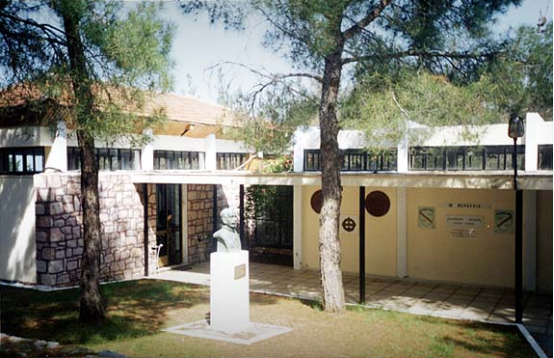
War museum
During the occupation of Greece by the Axis Powers in World War II, Kilkis was included in the German zone of occupation, but in 1943 it became part of Bulgarian zone, which was expanded to include the prefectures of Kilkis and Chalkidiki, after the Nazis allowed so. The most significant event during the occupation was the Battle of Kilkis which took place on 4 November 1944 between the communist-led EAM and a coalition of the collaborationist Security Battalions and nationalist resistance organizations.
VII.Other information
Name
Kilkis is located in a region that was multi-ethnic in the recent past and is known by several different names. The name of the city in Roman times was Callicum. In the early Byzantine times was called Kallikon, and was also known as Kalkis or Kilkis by the Greeks. In Bulgarian and Macedonian, it is known as Kukush (Кукуш). In a Greek church Codеx of 1732 it is mentioned as Kilkisi (Κηλκήση)., while in a Slavic church Codеx from 1741 it is mentioned as Kukush (Кукуш, Кукоуш). It was called Kılkış by the Ottomans.
Sport teams
Kilkis hosts the football club Kilkisiakos F.C. with earlier presence in 2nd-tier division of Greek championship and the handball club G.A.S. Kilkis which has won a Greek cup.
VIII.Contact information
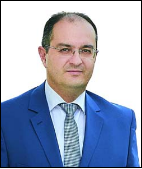
Mayor Dimitris Kyriakidis
Office of the Mayor of Kilkis-Secretariat:
23413 52102 and 23413 52103 email: dimarxos @ dhmoskilkis.gr
Contact Municipality of Kilkis
Address:
GEORGE CAPTA 17, Kilkis, Central Macedonia, 61100, Hellas
Director of the Municipality: 23413 52120 email: info @ dhmoskilkis.gr
Telephone: +30 2341 352100
Office of the Mayor's Associates: 23413 52102
Law Office: 23413 52138 dimarelou @ dhmoskilkis.gr
Independent Planning Department: 23413 52150-151 spanou @ dhmoskilkis.gr
www.e-kilkis.gr
Social Media:
Facebook: Δήμος Κιλκίς
